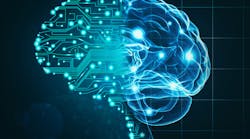Artificial Intelligence (AI) is all around us. Of course, plots involving some form of AI-driven machine run-amuck are center stage in every other sci-fi movie and that’s what may come to mind for some of us. Indeed, a significant percentage of the population is unaware that AI plays a central role in the everyday functions of most tech giants and many utilities. For example: AI algorithms drive the search capabilities of Google Assistant; Alexa, Amazon's intelligent voice assistant, uses neural networks to power natural language processing to analyze the human voice and respond logically. Microsoft uses AI for Bing, to power chatbots in Skype and analyze data in Office 365; and the list goes on with Apple, IBM, Facebook, Uber and many others using AI to run their businesses and offer services to customers.
According to Gavin Mooney with SAP, AI is a broad term that encompasses different technologies and systems, including natural language processing, computer vision and speech recognition, which mimic human abilities. Machine learning (ML), a subset of this grouping, refers to the use of algorithms to break down large volumes of data, evaluate it, detect patterns and then make a decision or prediction based on the patterns. Deep learning (DL) is an advanced form of machine learning that uses layers of neural networks with probability vectors that are actually trained using extensive amounts of data and super computers.
Here is where it gets eerily like those sci-fi movies. This new form of intelligence made possible and cheaper as technology advances is being harnessed to develop innumerable smart applications that can efficiently make critical decisions autonomously and accurately, without human intervention. Think it’s not happening at your utility? Think again. MIT even offers a class on Energy Analytics where it describes energy use cases for machine learning. MIT suggests how AI can be used in everything from helping customers optimize energy usage to network planning, executive decision making, finance, system O&M and more. Following are some real world data points of applications for the utility industry:
Siemens is one of a number of companies that have released software capable of operating grids autonomously. Siemens’ program, referred to as active network management (ANM), tracks how a grid interacts with various load conditions and adjusts variable components to in response to different loads of energy to increase efficiency. ANM can improve grid stability, voltage control, peak load management and real time situation analysis.
Schneider Electric uses ML and advanced pattern recognition to provide asset performance solutions through its Asset Performance Management (APM) programs. Schneider reports that Duke Energy prevented an estimated $35 million loss by using predictive analysis that identified a steam turbine problem. ABB also uses AI and ML through cloud based programs in its ABB Ability solutions program to offer everything from industrial automation to asset maintenance programs that manage terra-bytes of T&D O&M data.
Emerj, a great online source for AI focused news and research, ran an excellent article describing additional exciting AI applications at four major utilities, including Duke, Southern Company, NextEra Energy and Dominion Resources. The applications include ML based predictive analytics, customer energy management, demand management and voltage optimization, similar to the suggestions made by MIT. Potentially familiar smart grid technologies at your utility, but not recognized for their AI and ML drivers, are voice automation programs, smart grid self-healing automation packages and advanced system dispatch software.
We are not to the point where we have to worry about machines taking over the world using intelligence beyond humans, but let’s face it, there are some prescribed tasks that machines can execute better than us and we will surely be seeing more and more such applications in the power industry as the technology rapidly advances.


